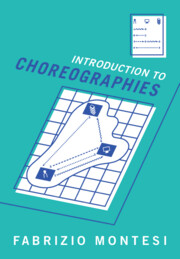Refine search
Actions for selected content:
2 results
12 - Discussion and Further Reading
- from Part III - Extensions and Variations
-
- Book:
- Introduction to Choreographies
- Published online:
- 11 May 2023
- Print publication:
- 25 May 2023, pp 201-212
-
- Chapter
- Export citation

Introduction to Choreographies
-
- Published online:
- 11 May 2023
- Print publication:
- 25 May 2023
